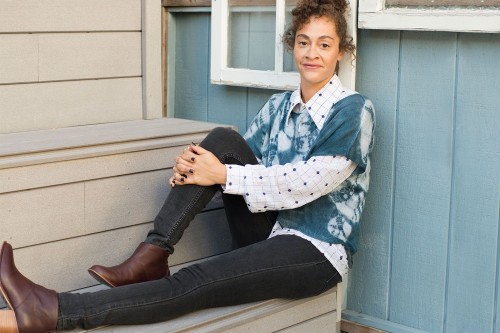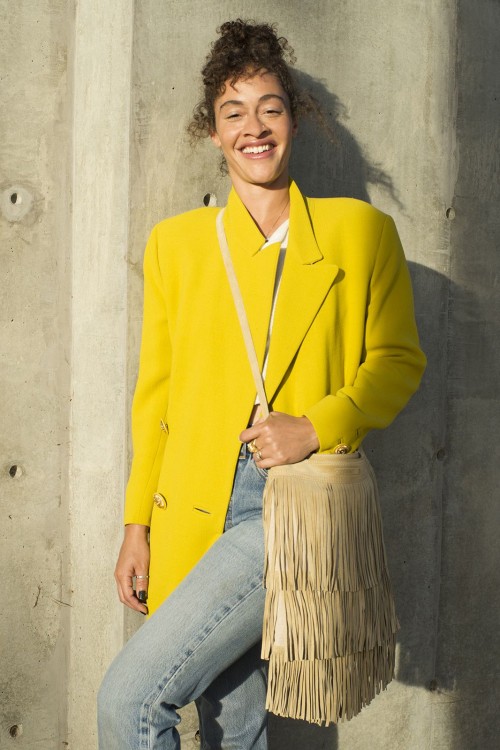Wearable Art: 3 Reasons Why Knative Clothing Is The Knitwear Brand To Know
Los Angeles-based Knative Clothing, helmed by Ariel Goodman-Weston produces “fully fashioned knitwear” that’s not only environmentally conscious, but is also waste conscious.
Fashion-making typically begets a lot of waste—from discarded textiles to water use. Finding a brand that truly tries to incorporate “no-waste” techniques is definitely something worth calling attention to. It’s also important to distinguish these fashion labels from fast-fashion brands like H&M that attempt to present themselves as eco-conscious in a dishonest practice referred to as greenwashing.
Brands like Knative Clothing create handmade, durable products. And because of its small size, it doesn’t seem to require the same amount of resources as a larger label would need—thereby labels like Knative create less harmful emissions.
Ariel Goodman-Weston
Here are three reasons why you need Knative knitwear in your possession this Fall into Winter.
Fully Fashioned Knit Technique
Ariel Goodman-Weston uses a fascinating form of “fabric sculpting” in order to make her fabulous knitwear. The designer uses “pre-shaped pieces of fabric” in order to limit waste. Typically, a designer cuts shapes from gigantic reams of fabric, which result in many unused pieces getting tossed aside. Knative’s strategy of using pre-shaped pieces makes it easier to sculpt the textiles into fun, fashion-forward tops and scarves.
Ariel Goodman-Weston/PHOTOGRAPHED BY THOMAS SLACK
No Waste
Goodman-Weston tells Refinery 29 that her “whole collection is made using natural fibers like hemp and cotton that easily break down.” The fact that her items are biodegradable is an important quality as the designer seems committed to limiting waste in the world. “After learning about what happens to clothing that doesn’t sell, I wanted to be really mindful of how much product there is in the world, and try not to add to that wasteful cycle of ready-to-wear clothing,” she says.
The knitwear designer takes the “no waste” practice one step further by making blank design templates. “So if a color isn’t selling,” she says, “I’m not stuck with it.”
Crop Sweater by Knative Clothing
Specific Standards of Sustainability
What’s also so great about Knative Clothing is it’s steadfast commitment to creating eco-conscious collections. For any small company that is striving to be a sustainable business, finding manufacturers that understand your brand can be a challenge. Most manufactures prefer the “cut-and-sew” method to fashion making as it’s less expensive and more time-efficient. But after finding the right production house that met her needs, Knative’s clothing making process includes using an automated machine to “knit panels” and a “linker who does the finishing work by hand.”
“What would take four hours on an old, hand-maneuvered knitting machine takes minutes, and it cuts down on cost tremendously,” she says.
Ariel Goodman-Weston/PHOTOGRAPHED BY THOMAS SLACK
And as Goodman-Weston tells Refinery 29, it’s also a challenge to source specific materials that support a “green” platform. For a plant-based fiber like Tencel, “I had to source from a guy who imports it from China,” she says. “It’s worth it to me,” she continues, “because it’s cutting down on pesticides and air pollution.”





